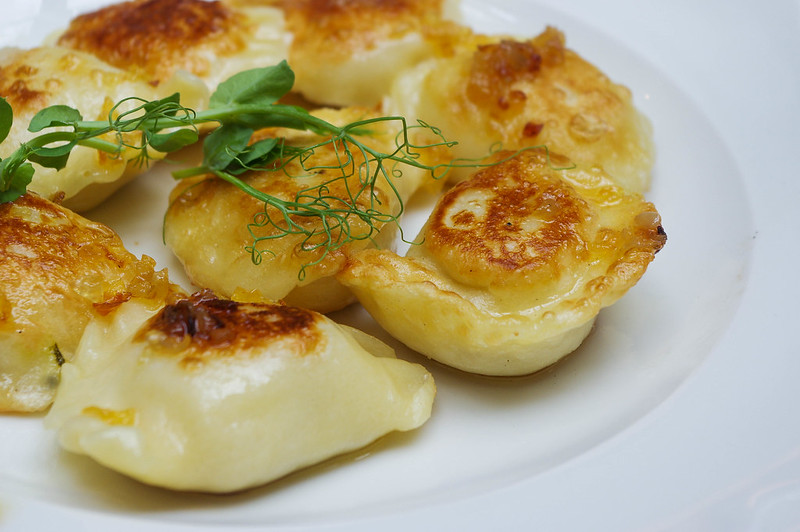The pierogi is a bit the basis of Polish cuisine! You can find this dish in different forms: boiled like pasta, baked golden brown or fried, sweet or savoury, there is something for every taste!
It is always very interesting to discover the same (or very similar) specialities in different parts of the world. The garnish and spices change, the shape varies from a more or less large half moon to a croissant, but in the end it is always the same dish. In Nepal they would be called momos, in China Dim Sun or Dumplings, in Mongolia Buuz, in Austria Schlutzkrapfen, in Georgia Khinkalis, in Japan gyoza and in France or Italy… ravioli. It should be noted that in the West, under the name “ravioli”, there are not only squares stuffed with meat close to cat food, bathed in a tasteless tomato sauce and straight from a tin can. There are dozens of different versions, including the pierogi, coming straight from Poland, which surprises with its elegance, different versions and popularity.
Pierogi is a very popular gastronomic speciality in Poland. It can be found in history books, in Polish expressions and on the menu of festive days such as Wigilia, Christmas Eve, etc.
But above all, it is available in several recipes, specific to each major life event. To celebrate a wedding, the pierogi is disguised as a kurniki (a large chicken ravioli) and for a funeral meal, it is called a mourning knysze and is made with a stuffing based on fresh cheese and buckwheat seeds. In a salad, the pierogi is made very small like the famous ravioli from Romans and is then called Uszka.
The pierogi is part of Polish culture, past and present. It is also known for having fed the people during the famine
Stuffed with potatoes, cabbage or onions, those rustic ingredients always available in winter, the pierogi has survived the centuries. Poles are still faithful to it and do not forget to put it on the weekly menu. Nutritious and inexpensive, today’s pierogi is on the menu of chic restaurants filled with duck, seafood or foie gras.
As you can see, pierogi stands out among the other gastronomic specialities of Poland, this pretty ravioli even has its own festival in Krakow. Not very sophisticated and nourishing, pierogi are to be tasted in all seasons and are also very cheap. Stuffed with meat, vegetables, fresh cheese with or without herbs, they can also be found on the dessert menu as they can contain fruit or a sweet filling. They are then served with whipped cream or a fruit coulis.
Dobry apetyt!
